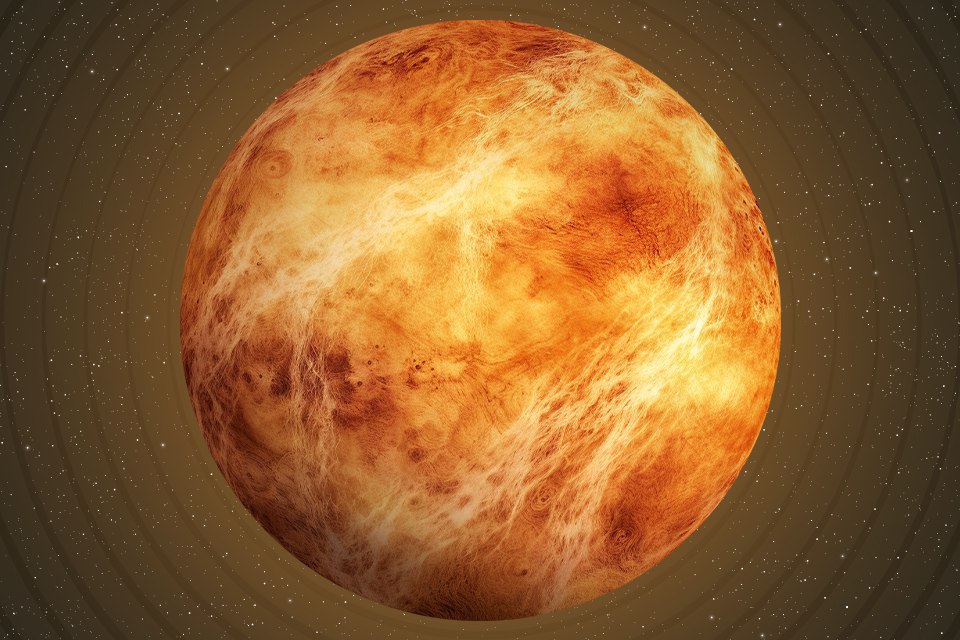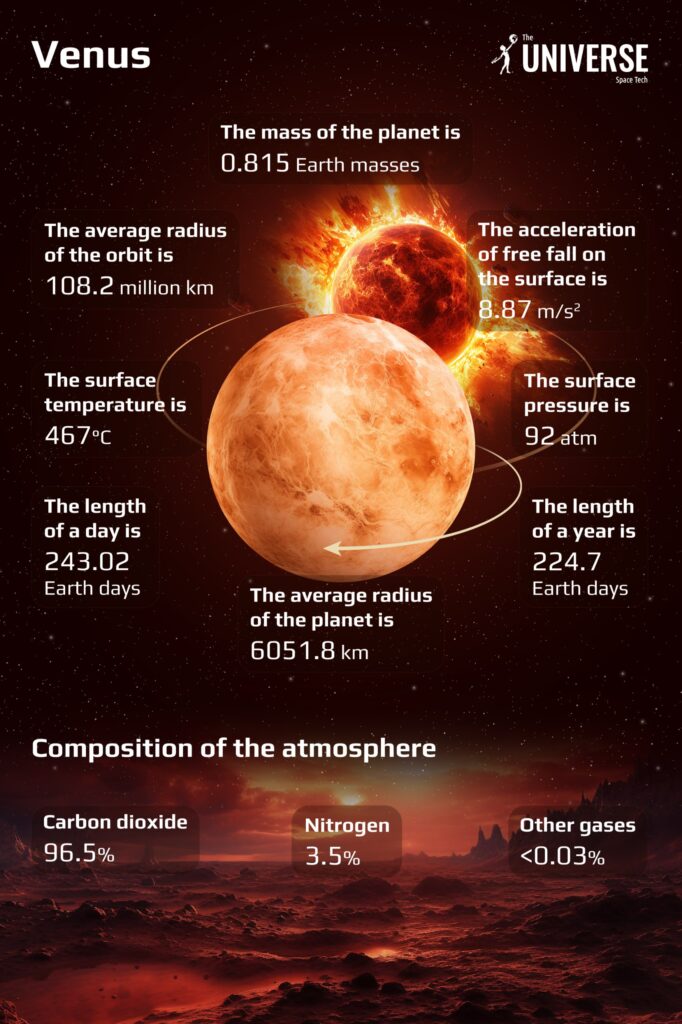On October 23, Venus will be in the greatest western elongation. At this moment, it will be at the maximum angular distance from the Sun, and it will be clearly visible before dawn. However, the second planet in the Solar System is interesting not only for this. Here are some answers to seemingly ordinary questions that may surprise you.

1. How long is a day on Venus?
For most planets, it is possible to calculate how many of their rotations around their axis occur during the time they spend on one orbit around the Sun. But not in the case of our nearest neighbor. Venus makes one orbit around the Sun in 225 Earth days. And around its own axis — for 243. That is, a day on it is 6% longer than a year.
But this concerns the so-called sidereal days — rotation relative to “fixed” stars. Since the diurnal rotation of Venus occurs in the opposite direction to that in which the rest of the major planets of the Solar System (except Uranus) do, the duration of the full period of day and night change on it turns out to be much shorter — less than 117 Earth days.
2. What does the surface of Venus look like from Earth?
Venus is the brightest object in our sky after the Sun and Moon. The minimum distance to it is only 38 million km. It would seem that the objects on its surface should be clearly visible from the Earth, but this is not the case.
The planet next to us has an extremely dense atmosphere, ten times heavier than the earth. Its surface is always hidden from us by a dense layer of clouds, through which nothing can be seen. Direct images of the surface of Venus were taken only by vehicles that descended below the cloud cover. There are also radar images obtained by orbital probes. They allow us to understand what the Venus relief looks like.
3. Does Venus have moons?
Venus is very similar in size to Earth, so it would seem quite natural if it had a moon like Earth’s. In the XVII-XVIII centuries, astronomers repeatedly reported the discovery of such objects in its vicinity. But in the end, all these reports turned out to be false. It has already been proven that Venus has no moons.
But it has a quasi-satellite, the asteroid 2002 VE68. It orbits the Sun in a 1:1 resonance with Venus, and when observed from its surface, it may seem that it really is its moon.
4. Are there objects on Venus named after men?
Regarding many bodies of the Solar System, there is a tradition to name objects on their surface not arbitrarily, but according to a certain principle. This is also true for Venus. When the orbiters could make detailed maps of its surface, astronomers decided that they would be given the names of real women or female characters from the myths of different peoples.
However, there are a few exceptions to this rule. Some objects managed to be named before this rule appeared. So, there are two large hills on Venus — the Alpha and Beta regions, which received the names of the first two letters of the Greek alphabet. And the highest ridge on the planet has become the only structure named after a man — the outstanding British physicist James Maxwell.

5. How long can the probe operate on the surface of Venus?
The dense atmosphere of Venus leads to a significant greenhouse effect. The gas mixture at its surface is heated to 467 °C, and the atmospheric pressure is 92 times higher than that of the earth. In addition, at high altitudes, there are sulfuric acid vapors.
Such conditions are extremely unfavorable for the operation of any terrestrial equipment. Automatic probes fail in a matter of minutes, even if they are protected. The record belongs to the Venera 13 spacecraft. It could stay on Venus surface for 127 minutes.
Follow us on Twitter to get the most interesting space news in time
https://twitter.com/ust_magazine
